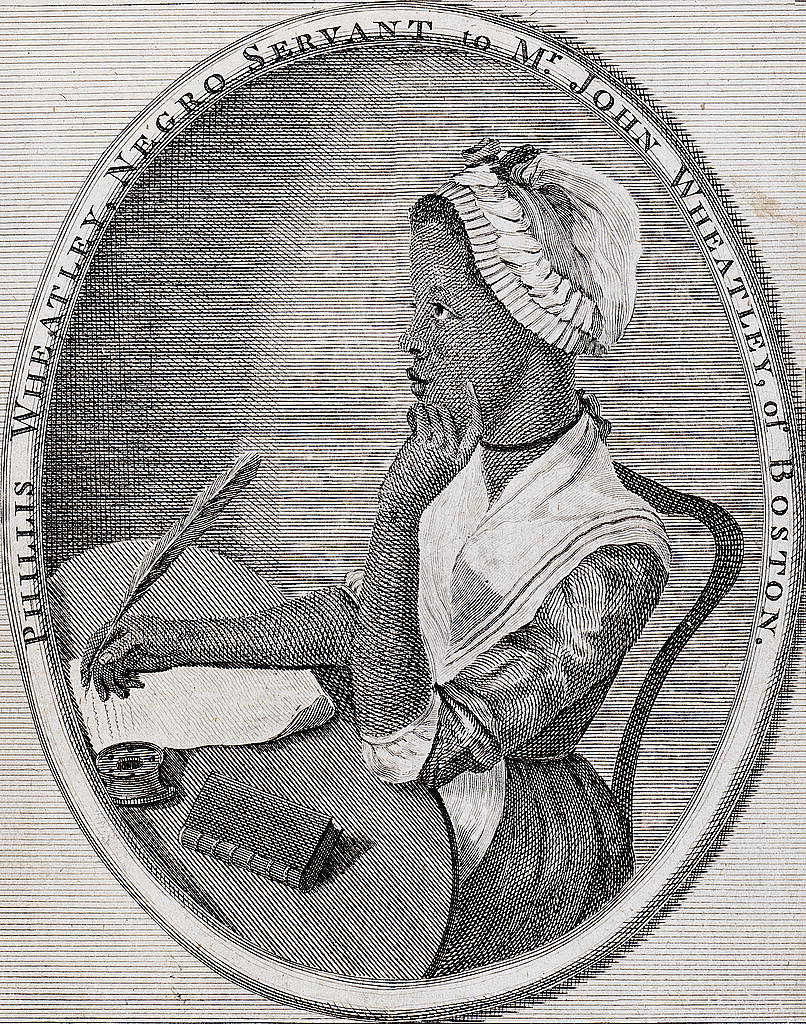Course Links
Lesson Plans
Course Documents
Links
Secondary Sources
Quick Links
Library Links
Citing Sources
|
Terms | Life | Times | Class Discussion | Group Questions | Links | Pictures | Quotes from Critics
 |
 |
Image from http://upload.wikimedia.org/wikipedia/commons/e/ef/Phillis_Wheatley_frontispiece.jpg
http://upload.wikimedia.org/wikipedia/commons/c/c1/Jonathan_Edwards.jpg
![]()
Terms and People to Know
Jeremiad : A rhetorical style which preaches hell and damnation because of the sinfulness of its audience. Usually a sermon, but this could be in a novel, poem, or other work. It could also be secularized as a more warning for any kind of dire future because of the apathy/ignorance/indolence of its audience.
![]()
Jonathan Edwards
This selection pigeonholes him as an old school Puritan. He was. But he was also, unlike earlier Puritans, interested in the world around him, and interested in science, etc.
Part of what was called the Great Awakening between the 1730s and 1740s
Three parts of a typical Puritan sermon:
1) text is announced
2) a religious doctrine is taken from the text
3) a contemporary application is derived -- making it relevant to the congregation.
![]()
Today?
Glenn Beck 8/27/10 “Mr. Beck made a surprise visit on Friday to a convention held by FreedomWorks, a Tea Party umbrella group, for Tea Party supporters.” “My role, as I see it, is to wake America up to the backsliding of principles and values and most of all of God,” he said. “We are a country of God. As I look at the problems in our country quite honestly I think the hot breath of destruction is breathing on our necks and to fix it politically is a figure that I don’t see anywhere” (qtd. in ZERNIKE and HULSE)
http://www.youtube.com/watch?v=6uISi96WOxY
Zernike, Kate and Carl Hulse. “In Washington, a Call for Religious Rebirth.” New York Times 28 August 2010. Web. 28 August 2010.
![]()
"On Being Brought from Africa to America "
- Work through the word choice -- why pagan, what does Wheatley argues helps the Africans so much?
- What do you make of the concluding couplet? Where does the emphasis lie?
Remember, Christians, Negroes, black as Cain,
May be refined, and join the angelic train.
"Thoughts on the Works of Providence "
- What's the emphasis on in the title?
- Scientific ideas in stanza starting line 11
- Mind blowing ideas in stanza starting line 83
- Yet what ends up winning in the end? "Infinite Love" (line 122).
Jonathan Edwards (written 1741) "Sinners in the Hand of an Angry God"
- Connect language and imagery to captivity narratives (cf. Slotkin 97)
- How many negative words are included in the first three paragraphs? What are they?
- What feeling is engendered by the repetition of the phrases "always exposed" and "slippery places" and "fall"? How does he develop this feeling/idea throughout the sermon? Identify at least two other passages that do so.
- How does Edwards threaten his congregation?
- How does he demonstrate his belief in the Puritan idea of Total Depravity?
- Why repeat "sovereign pleasure of God" or "sovereign hand" so many times? 503, And why repeat "wrath" so many times (505)? What kind of God is Edwards creating by this wording?
- What are some of the metaphors he employs to make his argument? Why are these effective?
- "He will crush out your blood. . ." What? What is this God doing? Why so cruel?
- Does he ever relent? Does he ever soften?
- How does this sermon connect to Rowlandson’s captivity narrative?
- How is this sermon similar to Rev. Whitefield’s (Franklin 607)?
![]()
- The literary critic Mason Lowance argues that "What emerges from a study of Edwards's sermons is evidence of a conscious commitment to imagery, to word pictures, so that God may be communicated through the senses as well as through the language of scripture" (Lowance). Do you see this in the "Sinners"? Where?
- What are some connections you can make between "Sinners" and Day of Doom and Rowlandson's Narrative ? What are some differences?
- What connection can you make between "Sinners" and Franklin 's Autobiography ? (remember these two were roughly contemporaries) Differences?
- What connection can you make between Begley's "Fear" essay and "Sinners"?
![]()
![]()
![]()
Scheick, William J. "Early Anglo-American Poetry: Genre, Voice, Art, and Representation." Teaching the Literatures of Early America . Ed. Carla Mulford. New York : MLA, 1999. 187-199. Print.
"Emblems [ . . .] are concrete instance of how Puritans read nature as liber mundi (creation as a divinely inspired text that reiterates Scripture). Emblems tend to have layers of signification, and so students with some knowledge of the Bible might be encouraged to think further about verticality (the trees) and horizontalness (the river) in "Contemplations." IN this poem, with the same number o stanzas as Christ's age at his crucifixion, the two natural types of river and trees emblematically suggest the intersection of the divine (eternal) and the human (temporal) on Christ's cross (Scheick)" (Scheick 189)
"To highlight Wheatley's regard for personal liberty and her esteem for Holy Writ, I ask students to interpret the elliptical last two lines: "Remember, Christians, Negroes , black as Cain / May be refin'd, and join th'Angelic train" (lines 7-8). Some read the lines as "Remember, Christians, [that] Negroes ," whereas others read them as "Remember, [that] Christians, [and] Negroes ." Does the final line refer only to intellectual and aesthetic refinement, such as the poet's careful management of metrics and rhyme, or does it also possible refer to the management of the ambiguous syntax of the preceding line to imply the equality of both races as mutually 'benighted soul[s]'" (line 2)?" (Scheick 193).
© 2009 David Bordelon